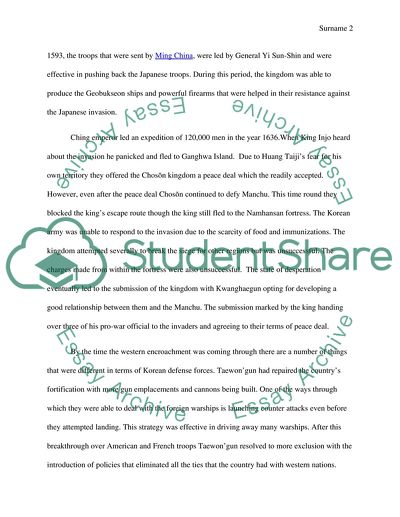Cite this document
(“Korean history Essay Example | Topics and Well Written Essays - 2000 words”, n.d.)
Retrieved from https://studentshare.org/history/1671455-korean-history
Retrieved from https://studentshare.org/history/1671455-korean-history
(Korean History Essay Example | Topics and Well Written Essays - 2000 Words)
https://studentshare.org/history/1671455-korean-history.
https://studentshare.org/history/1671455-korean-history.
“Korean History Essay Example | Topics and Well Written Essays - 2000 Words”, n.d. https://studentshare.org/history/1671455-korean-history.


